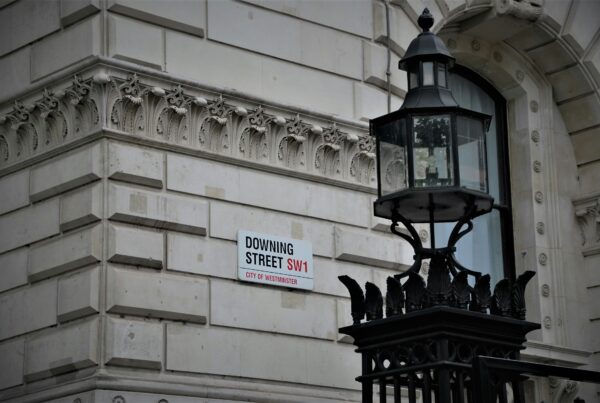Bright Blue, the independent think tank for liberal conservatism, has today published new analysis, entitled High and dry: Preventing tomorrow’s ‘flood ghettos’, identifying the number and location of residential properties in England that are at-risk at some point of having no flood insurance because they are in high-risk flooding zones and were built after 2008 so are not covered by the government and industry Flood Re insurance scheme.
The research, authored by Associate Fellow Helen Jackson, uses Land Registry data on property transactions alongside Environment Agency geospatial flood risk data products. It defines properties ‘at-risk’ of at some point becoming uninsurable as those built after 2008 and located in postcodes in what government and public authorities deem Flood Zone 3, defended or undefended.
The analysis finds:
- There are 70,000 residential properties that have been built in Flood Zone 3 in England since 1st January 2009 which are at risk at some point of not having flood insurance as flood risk increases, because they are ineligible for flood insurance via Flood Re.
- A majority of these 70,000 at-risk properties are in Greater London. Other notable potential flooding insurance blackspots include Hull and Somerset.
- 20,000 of the 70,000 at-risk properties are in areas without flooding defences. Lincolnshire, containing Boston, South Holland and East Lindsey local authority districts, stands out as the county with the greatest concentrations of undefended at-risk properties.
- About £31 billion worth of properties have been built after 2008 in Flood Zone 3, although a substantial proportion of this is protected by the Thames Barrier. About £5 billion is undefended. Hundreds of millions in particular have been spent building at-risk properties in Lincolnshire, Somerset and Yorkshire.
- There are 3,000 properties out of 70,000 that are ‘greatly at risk’, since they are not covered by Flood Re insurance and are located in areas where at least half of all residential properties have a 1-in-30 or higher annual chance of flooding, irrespective of defences.
- The areas of England with the highest concentrations of greater at-risk properties include near the confluence of the Rivers Quaggy and Ravensbourne in Lewisham; the outskirts of Mexborough near Doncaster; and an area near where the Stour branches in central Canterbury.
According to the Environment Agency, the number of properties in the flood plain is set to almost double over the next 50 years, if current planning outcomes continue. As a consequence, under its current rules, there will be growing numbers of at-risk properties which are not entitled to insurance via Flood Re.
The report proposes seven new policies to improve public awareness of flooding risk and extend coverage of flooding insurance as threat of flooding increases as a result of climate change:
- The new Secretary of State for the Environment should continue with the Flood Insurance Review and, as part of it, consider a later cut-off point for Flood Re eligibility
- Introduce new mandatory Flood Performance Certificates (FPCs) for all homes being sold with information on property-level resilience, Flood Re eligibility, government advice on reacting to flooding, information on flood defences, and the impact of climate change on future flooding risk.
- Sellers, conveyancing solicitors or landlords should be obliged to provide a recognised flood risk report (for example a Land Registry flood risk report) to all people purchasing properties.
- Reform the Building Regulations so by a set date all new-build properties in Flooding Zones 2 and 3 have property-level flood resilience (PFR) measures.
- Reform the National Planning Policy Framework to strengthen importance of PFR measures.
- Require all local authorities to monitor and report on the extent to which at-risk properties in their area have PFR measures.
- The Government should identify, map and monitor ‘flood risk hot spots’ – areas of the country particularly at risk of widespread and consequential impacts from flooding.
Commenting Helen Jackson, Associate Fellow of Bright Blue and author of the analysis, says:
“Government policy over the past decade has seen individuals as entirely responsible for finding out their flood risk, but obviously many are simply not aware. Many of those seeing their communities deal with flooding would view this onus on them as individuals to have understood how flooding could affect them as a bit heartless. Government needs to step in to make sure people are informed.”
“It would be the height of naivety to believe that homebuyers understand their flood risk in a changing climate — including potential uninsurability — when accessible public information isn’t yet available on future flood risk. As a society we mustn’t sleepwalk into loading the costs of climate change onto those least able to bear them.”
“There needs to be a renewed focus on dealing with flood risk as a dynamic, not a static, issue, and a much stronger presumption in policymaking that the transition to a flood resilient society won’t just happen without government intervention.”
Commenting Ryan Shorthouse, Director of Bright Blue, says:
“The UK needs to become a climate ready nation. We know that flooding is going to get worse with climate change. Supporting flood-hit communities, rather than leaving them to shoulder crippling financial impacts alone, is a clear test of whether we can respond to climate change as a decent society.”




